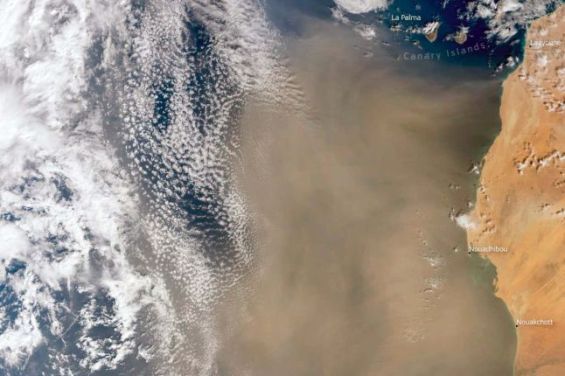Dust from the Sahara, a vast desert spanning much of North Africa, has been increasingly blown into Western Europe due to recent changes in wind patterns and desertification.
According to an article in science and technology magazine New Scientist, the phenomenon of dust being blown from the Sahara Desert into Europe is happening more frequently and intensely, even during colder months, scientists observed recently.
In southern Morocco, dust intrusions towards the Canary Islands have been recorded in the past three months. Sara Basart from the World Meteorological Organization told the London-based magazine that «in 2024, we are having these extreme events again». Dust from the Sahara also reached Spain this week.
While similar events are normal during warmer months, dust intrusions from the Sahara are becoming increasingly common in western Europe, reaching as far as the UK.
Extra-dusty winters and drought
A study published in August 2023 by a group of Spanish researchers, including Basart, confirms this trend. They found that giant dust clouds from North Africa reached Europe more often than usual during the last four years. Notably, these dust clouds became regular occurrences during the winters between 2020 and 2022, instead of being confined to the warm seasons.
To understand the reason behind these extra-dusty winters, researchers examined air pressure patterns over North Africa, Europe, and the Atlantic Ocean from 2003 to 2022. The findings pointed to significant year-to-year variations and large differences in dust amounts between winter months. The dustiest winters of 2020-2022 had more dust and the dust reached higher altitudes compared to previous winters.
The study suggests that high-pressure systems over the Atlantic Ocean may be to blame for the extra dust. These high-pressure systems act like walls, blocking strong westerly winds and allowing dust to travel farther. The way these systems are shaped seems to play a role, with some shapes being more common during the extra-dusty winters.
Basart and her co-authors also believe the intrusions could be linked to ongoing drought in the Maghreb region of northwest Africa. To them, drought helps increase the amount of dust available blown by the wind.





 chargement...
chargement...
















